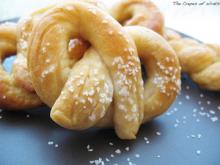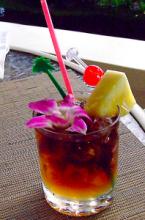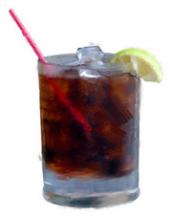Recently there has been an increase in the demand in America for unusual bar ingredients. Bitters are coming back in a big way, as are various anisette-style herbal liqueurs and various European tinctures that haven't left their arrondisements for ages. One such French oddity is St. Germain, a sweet liqueur made of elderflower, among other things. This stuff has been popping up in more and more Stateside bars and liquor stores every month, and with good reason. There's something special about St. Germain, aside from the fact that it's likely the only yellow bottle on the shelf aside from that perennial misfit, Galliano.
The people who market St. Germain would have us believe that every individual elderflower that becomes the liqueur is hand-picked by some careful French farmer and taken to some idyllic Alpine town on an old bicycle for processing. The true story has more to do with quickly harvesting as many flowers as possible during the Spring peak, which lasts a little less than a month. Elderflower is far from rare, so it's really just a matter of getting enough plants and macerating them in neutral grape spirit before they experience the same fragrance-dulling fate of all picked flowers. I don't really mind the mythos of St. Germain. Honestly, I'd rather the stuff be at least a little mass-produced, lest the price of a bottle climb from roughly $35 to the unkind heft of anything brewed in small batches.
Like other old concoctions, such as Lillet and Fernet, St. Germain is a liqueur with a more respectable flavor than most of the stuff called "liqueur" we're used to drinking. It's not as sweet or syrupy, plus it gets its body from distilled wine rather than from neutral grain spirits. This gives St. Germain a fuller, warmer mouth and a grapey undertone that pairs well with the floral top note.
But there's something else about St. Germain that I've come to appreciate. It's utterly subjective and it takes its appeal from a personal sense-memory, but that doesn't make it any less valid. In short, St. Germain tastes like a synagogue.
The first time I ever tasted St. Germain I knew I recognized the flavor, I just didn't know from where. It took me a while to realize it was lighting up those parts of my brain that recall things from childhood; subtle, almost forgotten things. Synagogues, generally speaking, smell like a combination of carefully-handled prayer books, sweet wine, lit candles and clean fabric. They also usually sport the unmistakable scent of fresh challah bread, a rich, egg-washed bread with a golden-brown crust and fluffy, somewhat cakey interior. This unique melange is almost exactly reproduced in St. Germain, however accidental that may be.
Drinking St. Germain straight, like any liqueur, is fine but occasionally too cloying. This in mind, I've devised a simple cocktail to bring out its flavors without ruining its unintentional Judaic tones. Hit a few cubes of ice with a good sweet vermouth, 1.5 ounces of clean gin and a half ounce of St. Germain, shake and serve with a plum or pluot garnish. If you feel like it, say a little prayer over it before the first sip.








